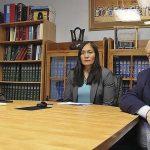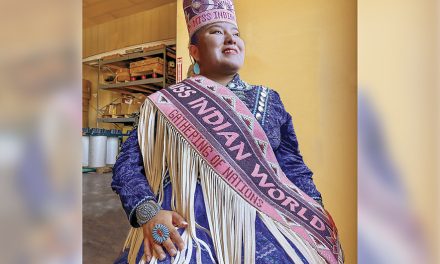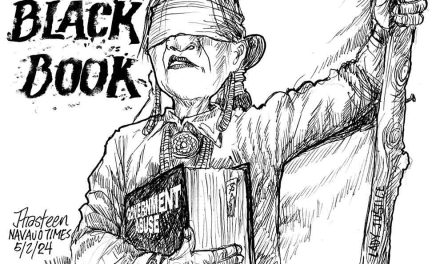
50 Years Ago: Fair manager resigns in tiff with chairman
Tommy Arviso Sr. resigned this week as the Navajo Tribal Fair manager much to the displeasure of Dick Hardwick, the editor of the Navajo Times.
He pointed out that the tribal fair held earlier this month was, for the most part, a great success and, although it probably lost money, it attracted tens of thousands of visitors and all the events were well organized. So why did Arviso resign? It seems that he and the tribe’s chairman, Raymond Nakai, bumped heads over the format of the program that was to be printed up for fairgoers.
Arviso was pushing for a program much like the ones published for previous fairs, containing the schedule and articles about the events. Nakai, however, wanted the program to focus on scenic wonders of the reservation. Arviso objected, pointing out that the tribe puts out a tourist guide in late spring that promotes scenic attractions.
Putting out such a publication in the fall when tourist season is over doesn’t make a lot of sense, he said. But Nakai was adamant and refused to approve the $5,500 set aside for the printing of the program unless Arviso agreed to the format he wanted. Apparently, the fair commission could not come to an agreement on the format so no program was printed up this year. Instead, the fair office put out a sheet of paper, which listed all of the events and times.
This was “completely unsatisfactory,” said Hardwick. But Nakai got the last say on the matter, however. “As it turned out, Chairman Nakai was selling his own photographic booklet, ‘Discover Scenic Navajo Today’ on the fairgrounds. The chairman is an amateur photographer and the booklet, which sold for $2, contains pictorial scenes from around the reservation,” the Times stated. The Times reported that Arviso had sold some $4,500 in advertising for the program and some of those advertisers went ahead and placed their ads in the fair edition of the Navajo Times.
Speaking of Hardwick, he was probably ahead of his time when he wrote an editorial calling for a streamlining of the tribal government. The government, which had about 2,000 employees at the time, was getting too large to be allowed to continue operating without a strong hand to guide it. (Five years later, the government had almost doubled in size.) But what needs to be done immediately, he said, was to reduce the size of the tribal Council.
The 74-member body needs to be cut in half, he said, in order to be more effective. “Some have suggested that a bicameral legislature be established with the present 18-member Advisory Committee making up the House of Representatives and the other members of the reduced Council making up the Senate,” he wrote.
Hardwick said he would not go as far as endorsing a bicameral Council but it at least needed to be discussed. While Navajo voters some 40 years in the future would reduce the size of the Council, the immediate future saw the Council grow to 88 members over the next six years. DNA-People’s Legal Services, the federal legal aid organization, has come under fire from several chapters who have passed resolutions blaming the agency for a series of changes put in effect in recent months by traders on the reservation. Several traders have stopped accepting pawn, forcing families in their areas to look for a trader that still accepts pawn or traveling to a border town pawnshop.
The interesting thing about all of this is that DNA is not responsible in any way for the new pawn restrictions. DNA officials said that many Navajos believe the change came about because DNA is suing the traders to get them to stop ripping off their customers. But there is no such lawsuit. DNA is suing the Bureau of Indian Affairs to get the federal agency to start enforcing its trader regulations. But even this is not the reason for the changes that are now going into effect, DNA officials said.
No, the reason for the change has to do with the decision by Congress earlier this year to pass the Truth in Lending Act which sets limits in how much pawn dealers can charge and puts in place penalties for companies that break the law. It turns out that many traders were charging interest rates far higher than allowed by the new law and instead of reducing their rates, many decided to scrap the program altogether.
Traders claimed that the new allowable rates were so low that they would lose money on each transaction. But many people believe the traders have stopped taking pawn in order to create support among the Navajo people for efforts to get the Council to enact its own regulations to allow the traders to charge higher interest rates. And finally, the BIA’s annual labor report has some interesting figures on tribal employment numbers. It seems that of the 39 program directors within the tribal government, 26 are non-Navajo and only four are women and they are concentrated in the social services programs. But below the program manager level, the figures change with more than 85 percent of the lower and middle level employees being members of the tribe. More than 60 percent of the employees have been working for the tribe five years more.








 Highway 264,
Highway 264, I-40, WB @ Winslow
I-40, WB @ Winslow